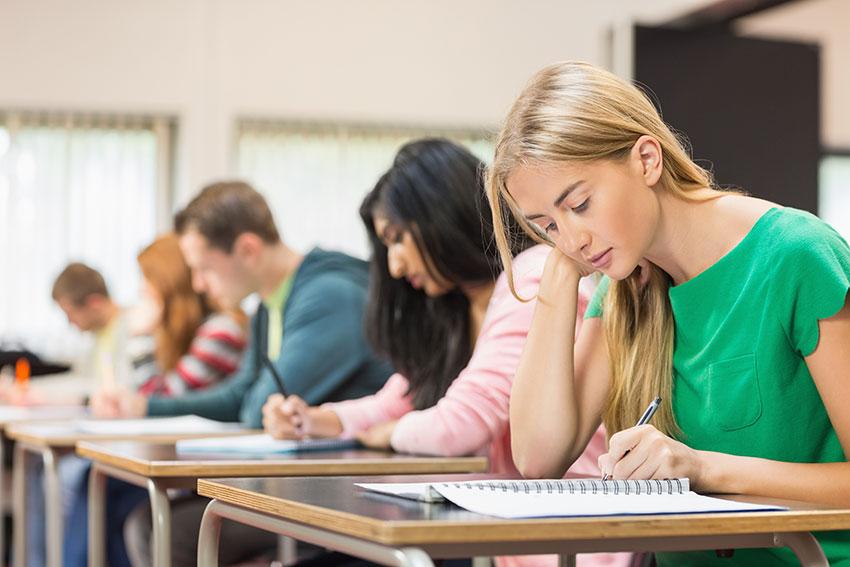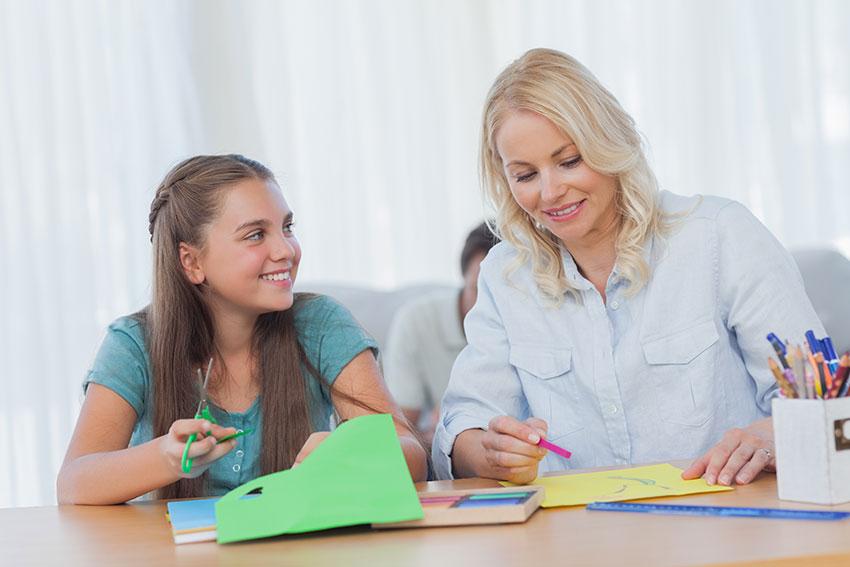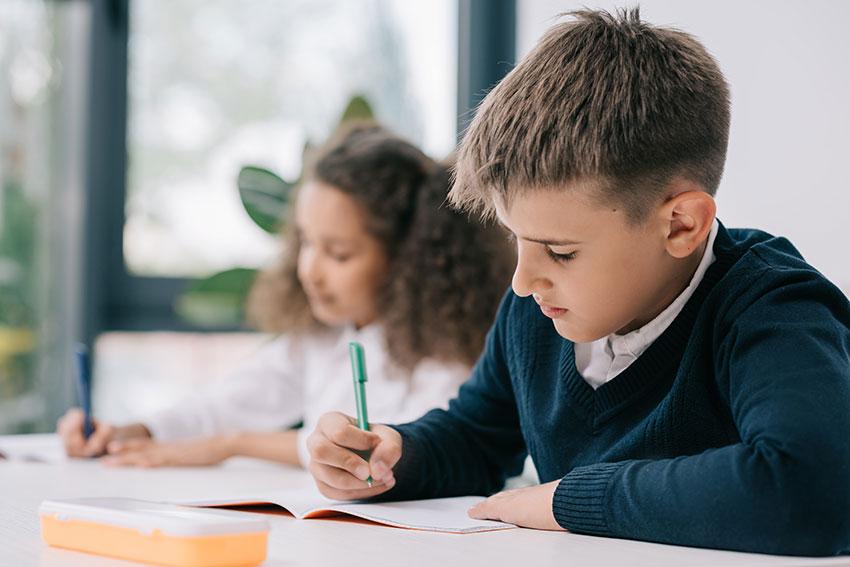How can I help my child with stress and when should I seek professional help?
Here, Dr Sabina Dosani – Child and Adolescent Psychiatrist and Clinical Partner, discusses the signs that your child is stressed and gives some very practical tips on how you can help.
Is my child stressed?
Stress is sneaky. It creeps up on our children and can cause chaos. Stressed people are often the last to recognise what is happening. Our children are no exception. Just because your daughter isn’t complaining about finding maths stressful, it doesn’t mean she’s not suffering. If your toddler seems to be behaving differently: irritable, crying more than usual, getting nightmares and regressing, chances are she’s stressed. Likewise, if younger children are permanently tired, not sleeping, whining and doing badly at school, they too may be stressed. Teenagers, on the other hand, may surprise you with outbursts of anger, skipping school and generally feel bad and miserable about themselves and the rest of the world.
Children who have ongoing stress are more likely to develop colds, digestive problems, anxiety disorders, headaches and obesity. Unless they learn to cope with stress, they’re more likely to misuse drugs and alcohol in their teens and adult life and become depressed and suicidal.
What causes stress in children?
It could be almost anything. Common sources of stress include the death of a pet, arrival of a new brother or sister, dad being made redundant, parental separation, moving home, changing school, exams, university applications, being bullied, the death of a grandparent or an unresolved family argument.

What can help stress in children?
Method 1 – Your child needs to feel listened to:
Robust, trustworthy relationships with adults are enormously helpful. It doesn’t matter who they are: parents, grandparents, aunts, uncles, godparents, family friends or teachers. Stressed children may not know what is causing it, and it is often a mixture of more than one difficulty. What helps is having someone who can actively listen to the child and who is prepared to ask open questions to tease out what is wrong.
Being heard and taken seriously is a stress buster.
Other stress busters:
- Breathing slowly and deeply
- Having a long warm bath and listening to favourite music
- Exercise
- Hobbies to retreat into
- High self esteem
- Relaxation exercise
Method 2 – Progressive Muscle Relaxation
Even very young children can learn a relaxation exercise called progressive muscle relaxation.
Progressive Muscle Relaxation relaxes the body progressively as children focus on different muscle groups. There are 3 basic steps:
- Isolate a muscle, inhale, and tense it.
- Hold the muscle tense for 5-10 seconds.
- Exhale and slowly relax the tense muscle. The relaxation phase needs to be at least as long as the tensing phase, possibly longer.
The progressive tense-hold-relax sequence moves up or down through the body. Some children prefer to move from their toes and feet up towards their face. Others prefer to move down from their head, beginning with scrunching their eyes up and working down the body.
- Ask your child to lie down.
- Get your child to bend her legs at the knees so her feet are flat on the ground.
- Say, “close your eyes and pretend you are at the beach, lying on the sand.”
- Ask your child to pretend she hears the water lapping against the shore.
- Ask your child to imagine that it's a beautiful, sunny day. The sun feels warm against her skin. The sand is warm underneath her body.
- Have your child take a few deep breaths as she “watches the waves go in and out”.
- Now ask your child to squeeze the sand between her toes. Inhale, hold, exhale, relax.
- Now squeeze both feet. Inhale, hold, exhale, relax.
- Say, “Do you feel the difference when you are relaxed?”
- Now ask her to tighten her legs. Inhale, hold, exhale and relax.
- Now her bottom, tummy, and chest. Inhale, hold, exhale and relax.
- Now her hands and arms.
- Then her shoulders and neck. Inhale, hold, exhale, relax.
- And then her face. Sometimes children don't know how to tense up their face. You may need to say something like: "Screw your eyes shut tight" Inhale, hold, exhale, relax.
- Finally, have her squeeze her whole body. Inhale, hold, exhale, relax.
- Ask her to take a few more deep breaths.
- Remind her to feel the warm sun and sand. Hear the water lap against the shore.
- Ask her to open their eyes.
Although this is a great exercise to do at home, it’s worth learning a more portable relaxation technique as well. It might feel a bit odd the first time you do this with your child, but apart from being hugely relaxing (it affects a person’s nervous system on a deep, physical level) it can be nurturing and bonding.
Tensing and relaxing muscles is not practical for most children on the school bus before a Geography GCSE mock. For those out-and-about times, there is another relaxation technique that children like because they can do it anywhere and nobody else can see what they’re up to. I call it ‘the calming place’.
Method 3 - The calming place
Find a quiet place where you won’t be disturbed for a few minutes, and close your eyes. Cast your mind back to the time in your life you felt most deeply relaxed. Some people like to think of a holiday, but feel free to choose anywhere. Imagine yourself in that calming place now. Try to bring it to life vividly, using all your senses. What can you see, hear, taste, smell and feel? Stay in the place for as long as it takes to feel calm. One of the great things about very young children is that they are better at imagining than adults. When you teach them to imagine their calming place, they have an individualised, portable stress buster, for life.
Collage it
When my friend Janet taught her daughter Ellie how to imagine a special calming place, they made a collage of it together. Ellie imagined herself by a lake, in a woodland clearing close to her grandmother’s house. She drew herself in the scene and cut out felt trees and shiny blue material for the lake. When the collage was finished, she imagined herself here, telling her mother how she could feel the breeze on her face, smell flowers, feel soft grass in her and in her mind’s eye see herself dipping her fingers into the shallow water and making ripples.
Janet wrote down what Ellie described and every evening, she read it back to her. Ellie practised retreating to her calming place: “It was hard at first,” she remembers, “but once you learn to do it, you can take it anywhere.” A bit like riding a bike.
11 year old Anton has used this relaxation trick too. He was being bullied at school, and although the bullying had stopped, he was very stressed out in the mornings before school and didn’t want to go. He imagines being by the sea, listening to the lapping of the waves and tasting the salt spray on his face. Although he hasn’t got a dog, he imagines his uncle’s Labrador is with him and that her can stroke her fur. In the distance, he hears and ice-cream van and can smell his favourite flavour: raspberry ripple. When he gets into school, he feels calm and ready to face the day.
Older children may struggle to visualise at first. The trick is to practice when they are not feeling particularly tense, so that they can use it easily when they need a stress buster.

With exam period coming up for a lot of children, stress is something most parents will be aware of. Keeping lines of communication open with your child is one of the most important steps to knowing how they are coping.
If you would like to find out more about how Clinical Partners could help you or your child please call 0203 326 9160 to talk to one of our triage team today.
Clinical Partners is the UK’s largest private mental health partnership, helping children, adults, families and organisations nationwide.
Dr Sabina Dosani
Consultant Child & Adolescent Psychiatrist
Dr Sabina Dosani is a highly experienced Consultant Psychiatrist currently working for the Anna Freud Centre looking after Children and Adolescents. She has a Bachelor of Medicine and Bachelor of Surgery as well as being a member of the Royal College of Psychiatrists. Dr Dosani also has a certificate in Systemic Practice (Family Therapy).
Related articles
Does your child have anxiety? Here are our top tips for parents
Anxiety in children – when should you seek help?
Anxiety disorder assessments: what to expect from your child’s appointment

